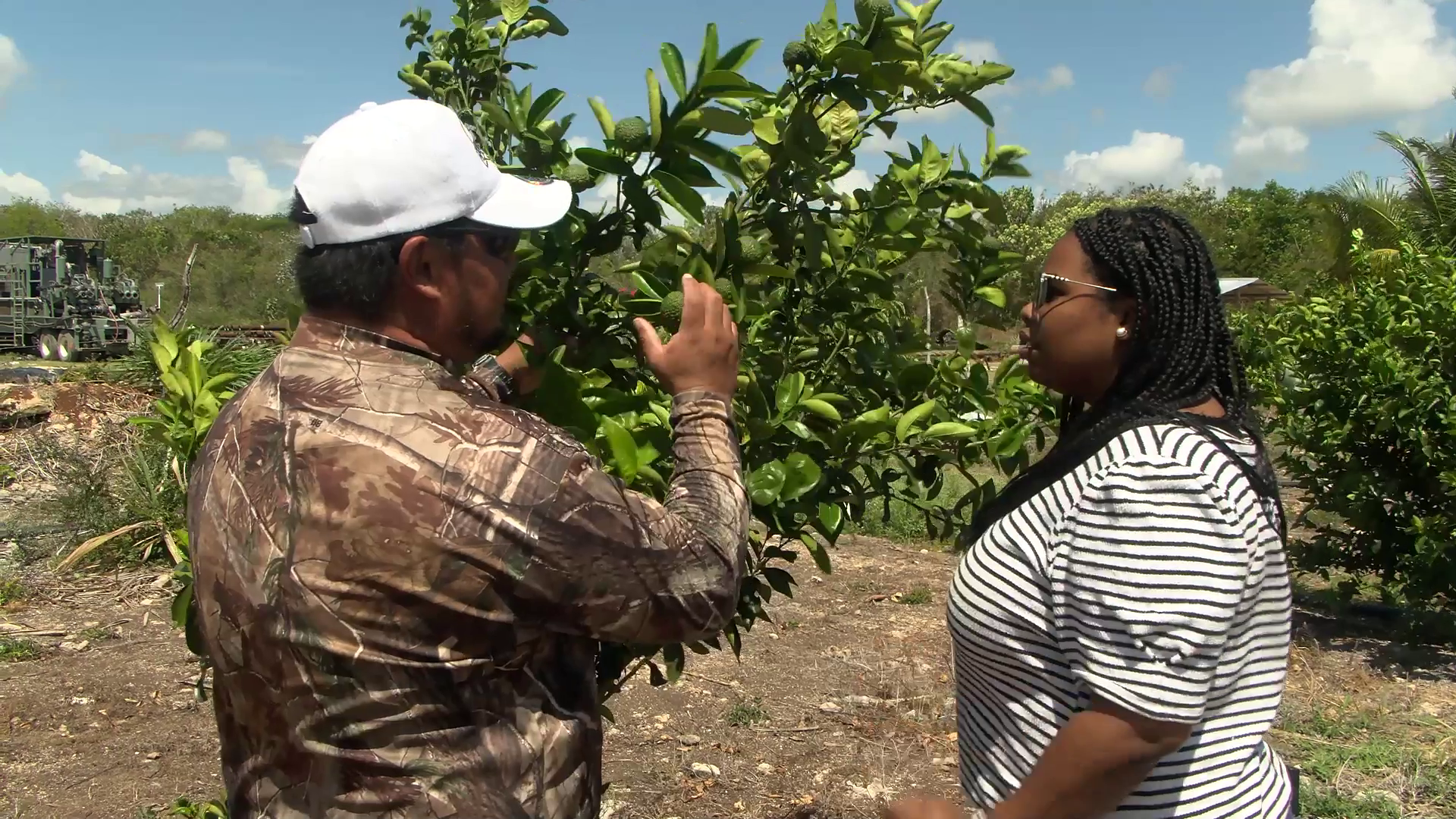Previously, we introduced you to the Ministry of Agriculture’s Junior and Woman Farmer of the Year, Juan Carillo and Noemi Requena. Tonight, we journey to Consejo Village in the Corozal district, where we meet Gregorio Esquivel, Belize’s Senior Farmer of the Year. With over three decades of farming experience, Esquivel’s farm is a testament to dedication and diversity, boasting a rich variety of mixed produce. News Five’s Britney Gordon brings us an exclusive look at his thriving agricultural haven.
Gregorio Esquivel, Senior Farmer of the Year
“I’m very proud and happy. My family is happy that hard work paid off. I’ve been working since I was twenty, and now I got the chance to win, and I’m very happy and I am, and my family’s proud of me, and when I got the news that I won farmer of the year, so I was excited.”
Britney Gordon, Reporting
Meet Gregorio Esquivel, the forty-four-year-old who’s just been crowned Belize’s 2025 Senior Farmer of the Year. Gregorio calls Consejo Village home, and he’s been nurturing a diverse array of crops there for over three decades. His farming adventure kicked off when he took the reins of his father’s farm, and he hasn’t looked back since.
“I started farming since I was like twenty years old when my dad got he used to be the farmer before, so I like farming. So I enjoy farming, and I decided to be a farmer.”
Esquivel currently farms on about sixty-seven acres of land, thirty of which he developed for mix farming. This includes crops livestock and beekeeping.
“Here at the farm, we got a hundred acres of farm of land. We got all type of trees, and we got tomatoes, sweet corn, lime trees. We got watermelon, we got citrus. We got cattle. And we got all kind of things at the farm.”
Britney Gordon
“So you have crops, livestock, agriculture and honey, I hear.”
“Oh yes. And I have honey here and but people here in Corozal know my honey, Esquivel and Son’s honey. And we are beekeepers too. We do honey and livestock and vegetables.”
Gregorio Esquivel
“He’s approximately like one year and a half right now. So he’s not ready for breeding. Like in two, one year more he will be ready for the herd.”
Esquivel’s days begin at five a.m., when he and his family start their work on the farm. The farm has been around since the sixties, and it brings him joy to continue to care for it with his loved ones.
“The best part is, early in the morning, me and my dad and my brother and nephews come in the farm and feed the animals. We give water to the animals. We see our produce grow and we see the hard work we do every day when you are harvesting, you know you have a good, healthy vegetable, good healthy animals, you know it’s paying off.”
One of the biggest hurdles Esquivel has faced is the unpredictable weather brought on by climate change. But he’s tackled this challenge head-on with a smart irrigation system that pumps water from a well sixty-three feet underground. It’s innovative solutions like this that keep his farm flourishing, no matter what Mother Nature throws his way.
“The challenge is sometimes the climate change, the weather sometimes we get lot of rain. It rain all day and all night. Sometimes, like now, right now we are at the dry season and we have the pasture is dry. So we need to plant corn to feed our animals.”
Even with challenges like climate change and the pesky threat of screwworm, Esquivel remains a beacon of encouragement. He’s cheering on every aspiring farmer to chase their dreams and keep pushing towards their goals.
“What would you say to other farmers who are hoping to be one day honored with the title of Farmer of the Year? How would you encourage them?”
Gregorio Esquivel
“I encourage them to keep working and never give up. And someday, once you plant more and someday they’re gonna win. Never give up.”
This year’s theme for the competition is “Integrating Sustainable Food Systems: Mitigating Climate Change, Strengthening Agricultural Resilience.” Britney Gordon for News Five.
